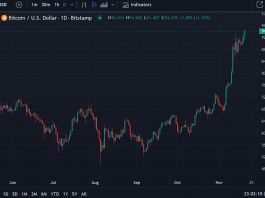MicroStrategy CEO Michael Saylor has found an infinite money glitch
MicroStrategy has exploded into financial headlines, spiking 50% in the last week to become the most traded stock on U.S. markets. This meteoric rise stems from its audacious bitcoin strategy, which has drawn both admiration and sharp criticism. Recently, unsavory comparisons have been made between MicroStrategy’s approach and the ill-fated Hunt Brothers’ 1980 attempt to corner the silver market. While the surface similarities might seem convincing, a closer look reveals significant differences in their mechanics, risks, and sustainability. This article examines those differences to address this and similar critiques.
The Hunt Brothers Scheme
In the late 1970s, Nelson Bunker Hunt and William Herbert Hunt, heirs to a Texas oil fortune, attempted to corner the silver market. Initially buying physical bullion as a hedge against inflation, they expanded into leveraged futures contracts, amplifying their market influence. By 1979, they controlled up to one-half of the world’s privately held silver supply, both in physical and futures contracts, driving prices from $6 per ounce to nearly $50 in January 1980.
A critical element of their strategy was its secrecy. To obscure the scale of their market activities, the Hunts employed a network of shell companies and anonymous accounts, both domestically and abroad. These entities executed purchases and held positions, creating the illusion of broader market interest in silver rather than a single concentrated effort. By masking their activity, the Hunts aimed to avoid regulatory scrutiny while maintaining upward pressure on prices.
However, their heavy reliance on margin loans to finance purchases created a dangerous feedback loop. Their buying spree inflated prices, attracting speculative interest, but also left them vulnerable to regulatory shifts. In January 1980, the Commodity Futures Trading Commission (CFTC) and major exchanges increased margin requirements, forcing the Hunts to provide additional cash to maintain their positions. Unable to meet these demands, they were forced to sell, triggering a sharp collapse in silver prices to under $11 per ounce.
The fallout wiped out much of the Hunts’ wealth and led to accusations of market manipulation. Their story remains a cautionary tale about the dangers of excessive leverage, secretive market practices, and the decisive role of regulatory intervention in pricking speculative bubbles.
Comparison of the Hunt Brothers silver scheme and MicroStrategy’s bitcoin approach
MicroStrategy’s Bitcoin Approach
MicroStrategy’s accumulation of bitcoin is radically different from Hunt Brothers’ attempt to corner the silver market. While the Hunt Brothers relied on secrecy, high leverage, and market manipulation, MicroStrategy (MSTR) employs a transparent, regulated, and sustainable approach to asset acquisition. By leveraging modern financial tools like at-the-market (ATM) equity offerings and convertible notes, the company has built a model that avoids excessive financial risk while capitalizing on bitcoin’s unique properties as a fixed-supply asset.
MicroStrategy’s ATM offerings are a cornerstone of this approach. This mechanism allows the company to sell new shares directly into the market at prevailing prices, raising substantial capital without incurring traditional debt. These funds are then used to acquire bitcoin with the result of increasing their bitcoin holdings per share, which MicroStrategy retains as a long-term treasury reserve.
Convertible notes have also played a critical role in funding. These low-interest or zero-interest debt instruments allow investors to convert their holdings into equity, reducing repayment pressure, but can be dilutive of current shareholders. Unlike traditional loans, convertible notes eliminate the risks associated with high leverage and margin calls, which proved fatal for the Hunt Brothers’ strategy.
MicroStrategy’s approach capitalizes on the premium of its stock relative to its bitcoin backing per share (or bitcoin NAV). This premium creates a feedback loop: as the company accumulates more bitcoin, its shares represent more bitcoin and often trade at higher valuations, enabling further ATM equity offerings and acquisitions.
Transparency and regulatory compliance are central to MicroStrategy’s operations. Every step of its bitcoin strategy is disclosed in public filings with the SEC, ensuring full transparency with investors. This openness contrasts sharply with the Hunt Brothers’ use of shell companies and anonymous accounts to obscure their actions. By adhering to corporate governance standards, MSTR’s approach is not only compliant but also sustainable over the long term.
MicroStrategy’s approach is not without risks—its reliance on a stock premium and exposure to bitcoin’s volatility are key factors to monitor. However, it lacks the risks that took down the Hunt Brothers, such as excessive leverage, cascade risk from margin calls, and gray market operations. Additionally, MicroStrategy operates within established regulatory frameworks, reducing the likelihood of unexpected interventions.
Refuting The Ponzi Scheme Allegation
Another common criticism thrown at both bitcoin and MicroStrategy is that they are somehow Ponzi schemes. Critics claim that MicroStrategy’s feedback loop—selling shares to buy Bitcoin and driving up its stock price—resembles the unsustainable mechanics of a Ponzi scheme. However, if you understand how a Ponzi scheme works, the comparison just doesn’t add up.
A Ponzi scheme involves nothing more than a transfer of funds from new investors to pay unsustainable returns to earlier investors, with no underlying asset to support the structure. It is a pure financial fiction. In contrast, MicroStrategy’s approach is built on legitimate equity issuance and the accumulation of bitcoin, a finite and transparent asset. Importantly, they make no promise of guaranteed returns and operate fully within corporate governance standards and financial regulations.
While reliance on the stock premium introduces a limiting factor, MSTR does not collapse when it encounters that limiting factor. If the premium were to disappear tomorrow, it would not collapse, because there is no structural need to meet required payouts or even to continually add to their bitcoin reserve. MicroStrategy’s process reflects a sustainable, asset-backed financial practice and is nothing like the unbacked foundations of a Ponzi scheme.
While the Hunt Brothers’ cornering of the silver market and MicroStrategy’s bitcoin accumulation share surface-level similarities, their strategies couldn’t be more different. The Hunt Brothers relied on risky leverage and secrecy in a market with unlimited supply. Their intent on manipulation ran afoul with regulators, which ultimately led to their collapse. In contrast, MicroStrategy’s bitcoin approach takes advantage of a fixed-supply asset and public financial tools, offering a more sustainable model.
Critics may continue to scrutinize MicroStrategy, but the stark differences between its approach and the Hunt Brothers’ strategy are clear. MicroStrategy’s transparent and regulated approach underscores the brilliance of bitcoin’s design and the ingenuity of its advocates. However, like any financial strategy, it is not without risks, particularly given bitcoin’s inherent volatility and reliance on stock market dynamics. For now, MicroStrategy’s approach highlights the power of bitcoin’s revolutionary properties and its potential to reshape global markets.



